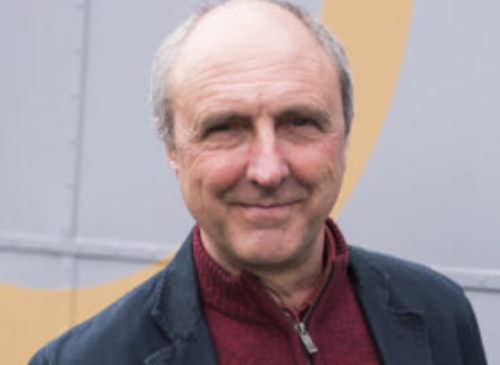
David Wheeler – Artistic Director.
David is Artistic Director of IOU with responsibility for developing the artistic identity of IOU. His role is to invent concepts for IOU productions and develop these with the regular IOU team, together with artists and technicians recruited for particular productions.
His role involves devising, directing, designing and making, while also work closely with the Executive Director, Joanne Wain to plan, manage and visualise the overall direction of the company.
How long have you been with IOU and what has been your highlight?
Forty two years! I am one of the founder members of the company which was formed in 1976.
IOU is one of the pioneers of site specific work, that is, making shows that use the features of the location to influence and incorporate into the presentation. The real world interacting with the invented world adds an unpredictable and surprising addition to the concept of the show.
The way our minds combine and incorporate these different worlds into an unintended but satisfying logic has always fascinated me. Site specific shows like House and This is the Edge from the early eighties helped to define IOU. Over forty years later, and many encounters between the real and invented world later, this is still a stimulating part of IOU’s work.
Our recent show Rear View took this to a logical conclusion by building a seating-rake cut into the back of a double-decker bus. The bus could legally travel the streets and roads of towns and cities with the audience facing backwards watching the real world pass by like a film with an ever changing plot. The bus would then stop at pre planned locations and a young woman would appear and tell her story of her life to come in the town. The interaction of the real world meant the show was never the same twice, the audience gently forced into combining and inventing their own meaning to what they saw and heard.
Tell us about your professional journey before joining IOU?
I went to Bournville Art School and then went on to do Fine Art at Wolverhampton. The college gave me the opportunity to make large mechanical sculptures and was the first student to make my final show outside the college with a mechanical sound installation outdoors in a friendly farmers field.
After College I worked with Welfare State International, where I learnt about a whole new artform and together with members of WFS we formed IOU in 1976. The first eleven years the founder members worked as a collective and then the company partially fragmented and I became Artistic Director as we developed a new management structure with a new company manager. This enabled us to organise the different types of projects with different makers and performers working on contract for specific projects.
In 2007/8 I spent three months in Antarctica as part of a year long sabbatical, and this recharged an interest in the sculptural installation work I made at art school and triggered the addition of this type of work as a regular part of IOU productions.
I have worked exclusively with IOU full time since it’s formation and I’ve guided the evolution and development of the company with the influence of different creative production teams and creative administrators that have helped refresh and reinvent the company over the years.
Tell us about any stand out productions or exhibits you’ve experienced that left their mark on you?
A recent inspirational moment was reading about The Caddisfly’s Mirror. This is a project by Hubert Duprat that used the natural behaviour of the Caddisfly larvae. The tiny water living creature covers its body in grains of sand, gravel and twig fragments found at the bottom of ponds and rivers.
This material the caddisfly larvae assembles around itself, bonded with the sticky thread it produces, to create a camouflage shell for protection from predators. Using an aquarium, Hubert replaced the usual pond detritus with bits of gold leaf, pearls, precious stones and metals. The caddisfly larvae naturally created a covering using the precious (to humans) bits and pieces.
It’s an idea that sets the mind thinking about the concepts and values we ascribe to the world around us. The book arrives with me tomorrow, Amazon tells me, I look forward to reading more about it.
